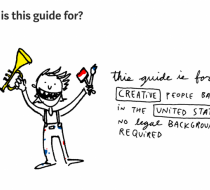A Legal Guide Helps Artists Make and Protect Protest Art 1 Favorite
Harvard University’s Cyberlaw Clinic and metaLAB have created a free guide for making protest art while navigating intellectual property law.
“Because political art speaks directly to issues that people care deeply about (in that instance, having an African-American First Family), there’s a strong incentive for folks to use it, share it, repurpose it,” said Fjeld. “Before the internet, that meant maybe repeating a slogan or getting out your guitar and covering a protest song (both fine from a copyright perspective), but the internet makes it incredibly easy to grab a whole work and copy it, and share it with thousands or millions of people instantly. That’s a double-edged sword: an incredible technology for building culture and community, but one with real consequences for artists who want to be able to control the destiny of their work.”
In true lawyer-like fashion, the creators of the Cyberlaw Guide are quick to remind readers that this is in no way the definitive or exhaustive word on copyright law and other related issues. However, it is an excellent jumping off point, and one that addresses many common misconceptions about issues of public domain and fair use, among others.
“As we say in the guide, just because something is available publicly — as in a Google image search result — doesn’t mean it’s in the public domain,” said Fjeld. “’Public domain’ actually means things that aren’t protected by copyright, whether because they’re old (roughly, created before 1923 here in the US), because the copyright owner has dedicated them to the public domain (for example, through the Creative Commons CC0 license), or for some other reason. In some ways content on the internet is like the banquet scene in Miyazaki’s Spirited Away — so many images, songs, and movies right in front of you, and it all seems free, but sampling can have consequences, and you’re in a much better position if you know the rules before you jump in.”







